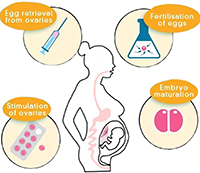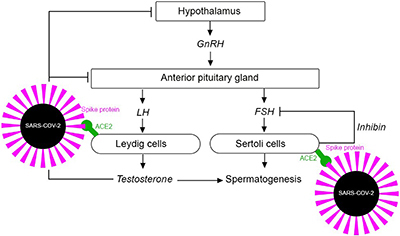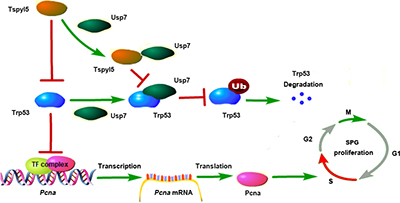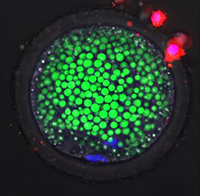While assisted reproductive technology (ART) offers hope to infertile couples, it also brings problems. In this study, researchers found the application of ART altered the gut microbial composition and metabolism of pregnant women. The gut microbiota, as a ‘virtual organ’, is profoundly associated with the health of mother and fetus, and may have the potential to predict and treat ART-related adverse pregnancy and delivery outcomes. Image by Ni Wu.
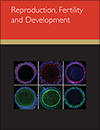
Reproduction, Fertility and Development
Volume 36 Number 3 2024
GnRH vaccination is used in male horses to reduce sexual behaviour and gonadal function, but the time to regain fertility varies considerably among individual animals. Daily GnRH agonist treatment for approximately 60 days in stallions vaccinated against GnRH successfully stimulated the production of sex steroid hormones and spermatogenesis. This treatment may be recommended for GnRH-vaccinated stallions with persistent inhibition of testicular function and fertility. Image by Camille Gautier.
This article belongs to the Collection Dedication to Jim Cummins.
Is sperm quality reduced after COVID-19 infection? In everyday counselling, we often have to answer questions like these and advise people who are undergoing assisted reproductive medicine after a COVID-19 infection. Fortunately, although sperm quality is reduced after COVID-19 infection, this effect appears to be reversible, leading to a recommended 3-month recovery period regarding assisted reproductive therapy. Image by Julia Stark.
RD23205 Abstract | RD23205 Full Text | RD23205PDF (2.9 MB) Open Access Article
The mammalian Y chromosome is crucial for spermatogenesis, in addition to controlling male sex determination. In order to elucidate the specific role of the TSPY1 gene in spermatogenesis, we used CRISPR/Cas9 technology to generate Tspyl5-deficient mice (TSPY1 homologous gene). Tspyl5-deficient mice showed significant decreases in sperm count and fertility. This important discovery suggests these genes are crucial for male reproduction.
In vitro-produced embryos are essential for employing assisted reproductive technologies to establish porcine models. However, polyspermy remains a major obstacle to the production of porcine embryos in vitro. This study was conducted to test a coculture system of porcine luteal cells during in vitro maturation to improve suboptimal conditions. Our model could be an alternative to replace the conventional maturation medium, affecting the metabolism of the oocytes and leading to lower rates of polyspermy and higher rates of embryo development. Image by Gabriela Teplitz and Alexandre Bastien.



